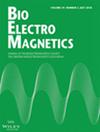Zahra Safaei, Gary L. Thompson
求助PDF
{"title":"Caspase-Dependent Cell Death and HDAC4 Translocation Following Microsecond Pulsed Electric Field (μsPEF) Exposure in MCF-7 Breast Cancer Cells","authors":"Zahra Safaei, Gary L. Thompson","doi":"10.1002/bem.70009","DOIUrl":null,"url":null,"abstract":"<div>\n \n <p>Breast cancer is the second-leading cancer-related death among women. Survival rates decrease from 99% for localized stages of breast tumors to only 27% when distant metastases develop. Increased invasiveness and proliferation of breast cancer cells correlate with overexpression of an enzymatic coregulator of gene expression, histone deacetylase-4 (HDAC4). If HDAC4 is cleaved into two halves by another enzyme called caspase, one-half of HDAC4 goes into the nucleus of the cell where it promotes a highly regulated form of cellular self-destruction known as apoptosis. Caspases are activated by fast rises in calcium ion (Ca<sup>2+</sup>) concentrations inside cells, which can be initiated via plasma membrane electropermeabilization induced by microsecond pulsed electric fields (µsPEFs) applied to cells positioned between electrodes. However, the MCF-7 breast cancer cell line is deficient in caspase-3, which is the type of caspase predominantly responsible for cleavage of HDAC4. In this in vitro study, we demonstrate µsPEF exposure elicits HDAC4 translocation independently of caspase activity in MCF-7 cells. Yet, µsPEF-induced MCF-7 cell death remains dependent on Ca<sup>2+</sup> electropermeabilization and caspase activity. Bioelectromagnetics. 00:00–00, 2025. © 2025 © 2025 Bioelectromagnetics Society.</p></div>","PeriodicalId":8956,"journal":{"name":"Bioelectromagnetics","volume":"46 4","pages":""},"PeriodicalIF":1.8000,"publicationDate":"2025-05-13","publicationTypes":"Journal Article","fieldsOfStudy":null,"isOpenAccess":false,"openAccessPdf":"","citationCount":"0","resultStr":null,"platform":"Semanticscholar","paperid":null,"PeriodicalName":"Bioelectromagnetics","FirstCategoryId":"99","ListUrlMain":"https://onlinelibrary.wiley.com/doi/10.1002/bem.70009","RegionNum":3,"RegionCategory":"生物学","ArticlePicture":[],"TitleCN":null,"AbstractTextCN":null,"PMCID":null,"EPubDate":"","PubModel":"","JCR":"Q3","JCRName":"BIOLOGY","Score":null,"Total":0}
引用次数: 0
引用
批量引用
Abstract
Breast cancer is the second-leading cancer-related death among women. Survival rates decrease from 99% for localized stages of breast tumors to only 27% when distant metastases develop. Increased invasiveness and proliferation of breast cancer cells correlate with overexpression of an enzymatic coregulator of gene expression, histone deacetylase-4 (HDAC4). If HDAC4 is cleaved into two halves by another enzyme called caspase, one-half of HDAC4 goes into the nucleus of the cell where it promotes a highly regulated form of cellular self-destruction known as apoptosis. Caspases are activated by fast rises in calcium ion (Ca2+ ) concentrations inside cells, which can be initiated via plasma membrane electropermeabilization induced by microsecond pulsed electric fields (µsPEFs) applied to cells positioned between electrodes. However, the MCF-7 breast cancer cell line is deficient in caspase-3, which is the type of caspase predominantly responsible for cleavage of HDAC4. In this in vitro study, we demonstrate µsPEF exposure elicits HDAC4 translocation independently of caspase activity in MCF-7 cells. Yet, µsPEF-induced MCF-7 cell death remains dependent on Ca2+ electropermeabilization and caspase activity. Bioelectromagnetics. 00:00–00, 2025. © 2025 © 2025 Bioelectromagnetics Society.
MCF-7乳腺癌细胞暴露于微秒脉冲电场(μsPEF)后caspase依赖性细胞死亡和HDAC4易位
乳腺癌是女性癌症相关死亡的第二大杀手。乳房肿瘤局部期的存活率从99%下降到远处转移期的27%。乳腺癌细胞侵袭性和增殖的增加与基因表达的酶促调节因子组蛋白去乙酰酶-4 (HDAC4)的过度表达有关。如果HDAC4被另一种叫做caspase的酶切成两半,一半的HDAC4进入细胞核,在那里它促进一种高度调节的细胞自我毁灭形式,即细胞凋亡。caspase是由细胞内钙离子(Ca2+)浓度的快速上升激活的,这可以通过施加在电极之间的细胞上的微秒脉冲电场(µsPEFs)诱导的质膜电渗透来启动。然而,MCF-7乳腺癌细胞系缺乏caspase-3,这是一种主要负责HDAC4切割的caspase。在这项体外研究中,我们证明了µsPEF暴露会在MCF-7细胞中独立于caspase活性引起HDAC4易位。然而,µspef诱导的MCF-7细胞死亡仍然依赖于Ca2+电渗透和caspase活性。生物电磁学。00:00 - 00,2025。©2025©2025生物电磁学学会。
本文章由计算机程序翻译,如有差异,请以英文原文为准。

 求助内容:
求助内容: 应助结果提醒方式:
应助结果提醒方式:


